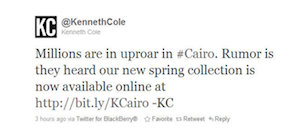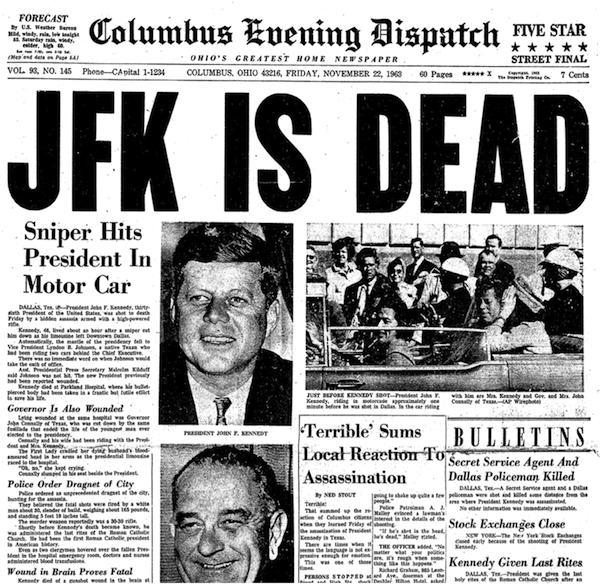The MH17 airline tragedy highlighted a major problem with many content marketing programs, one I see every time a catastrophe unfolds. As Twitter inches closer to a mainstream news outlet, and brand journalism becomes more commonplace, it’s essential for content marketers to understand how to react in a crisis to avoid brand damage.
As the story unfolds . . .
I woke up on Friday, 18 July to the awful news. As is so often the case with breaking news, the first place I read about the plane crash was on Twitter. Suffering from jet lag, it was essentially the middle of the night in Australia and just a few hours after the event happened. By early morning, my Twitter feed was full of details and speculation as the world tried to make sense of what happened. I immediately started firing notes off to my clients. (More about that later.)
Unfortunately, my feed was also full of brand content such as:
- Attend my FREE webinar on Tuesday
- Find out how to save $$$ off your mortgage
- Time is running out on our winter sale
- New research suggests people with cats live longer
- 15 ways Instagram can transform your business
Okay, I invented those titles to protect the guilty but you get my point. As I was trying to grasp what had happened, those posts on Twitter – and to a certain extent Facebook – made me angry. They appeared vacuous and insensitive. It demonstrated marketing programs that were on auto-pilot. I took note of a few of the bigger brands, brands that should know better, and decided to boycott them on the spot.
What journalists know
Here’s something publishers and editors understand that brands are slow to figure out. Sometimes there’s only one story. Sometimes you have to put things on hold. Sometimes the world needs to absorb a single event without interruption. Sometimes the noise just has to stop. Take a look at the front page of any newspaper during a tragedy and you’ll see every single story is on one topic.
What content marketers should do in a tragedy
Earlier I mentioned one of the first things I did after finding out about MH17 was to email my clients. Actually, the very first thing I did was to suspend all automated social media updates, not just for me but for my clients, too. I didn’t even bother to ask.
Once I knew the posts I had scheduled to run that day were suspended, I started to email my clients. (I have the backbone of my social updates scheduled about a day in advance so I’m not sitting on Twitter and Facebook all day.) I explained the situation, told them what I’d done, and advised they go “radio silent” for the day. Here’s one of the notes I sent to a marketing director:
I’m going to advise we go silent on Twitter and Facebook, at least for a day. If you haven’t heard, they’ve just confirmed 27 of the 298 dead on MH17 are from Australia. That’s actually immaterial for you since you’re a global brand.
My concern is if you’re tweeting about business as usual, you appear to be seriously disconnected from reality. Brands get bashed every single time something like this happens. I’ve moved the posts I had scheduled for today to tomorrow. Let me know if you feel otherwise.
One thing brands should NEVER do
Humour and comedy have no place in a tragedy. Regardless of the event, when people are dealing with death or struggling to comprehend a massive calamity, it’s better to shut up than try to make light of the situation.
How brands can make a positive impression
 In some situations, it could make a lot of sense for your brand to get involved in the news cycle of a tragedy. If you have information or expertise that might help or console victims or survivors, by all means share it. But you need to be very careful. If your company benefits in any way, it may put you in a bad light. Kenneth Cole learned this the hard way in February 2011 when he tried to pitch a shoe sale on the back of the Egyptian uprising.
In some situations, it could make a lot of sense for your brand to get involved in the news cycle of a tragedy. If you have information or expertise that might help or console victims or survivors, by all means share it. But you need to be very careful. If your company benefits in any way, it may put you in a bad light. Kenneth Cole learned this the hard way in February 2011 when he tried to pitch a shoe sale on the back of the Egyptian uprising.
Welcome topics include:
Safety – Where people can go for aid, how to identify hidden dangers like downed power cables, or how to ensure your drinking water is safe are all examples of useful information.
Support – Mental health hotlines, where to find support from faith-based communities, and availability of food stations or shelter is the kind of information people need.
Donations – Where to donate blood, food, water, money and clothing is useful information that helps your audience take appropriate action.
Volunteering – In tragedies large or small, people want to know how they can help.
A crisis can bring people together but that doesn’t mean there’s a place for your content in a disaster or calamity. Traditional journalists know that at times there’s only one story. Brands and content marketers need to learn the same lesson. Your business won’t collapse if you scale back for one day.
What do you think? Should content marketers observe journalistic customs during a tragedy or disaster?



Recent Comments